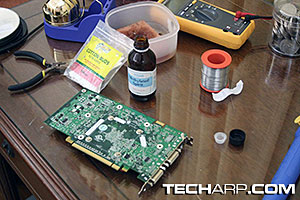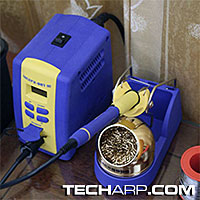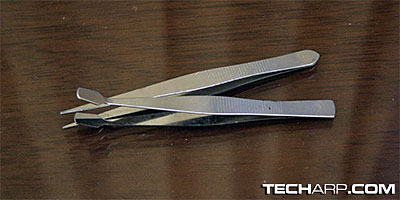Advanced Graphics Card Repair
Now that you have already learned how to repair broken capacitors and inductors on your graphics cards (or any other boards), it's time to move on to the smaller components that are harder to tackle. These include surface-mounted resistors and capacitors. So, this second guide on graphics card repair will show you how to repair small, chipped-off SMD components.
Do note that my handiwork isn't that good in this guide because I just couldn't find my missing 0.2 mm solder tip. However, as unsightly as it may seem, the joint work shown in this guide will suffice not only as a demonstration but for actual repair work. So, let's start with what you need to get started and move on from there.
Tools You Will Need
1. Everything listed in the first graphics card repair guide. If you have not read that yet, please start with that guide first. It's a good primer before you start on this guide.
- One 40-watt soldering iron with precise tip. I use a Hakko DASH 35W iron.
- A multimeter with a continuity beeper. I use a Fluke 179 multimeter.
- A solder sucker. I use a Hakko DS-1 solder sucker.
- Some solder wick. I generally use either Kester or Hakko solder wicks.
- Pliers and cutters.
- Solder!
2. Isopropyl alcohol
- Alcohol is a great solvent, and a very good flux cleaner. Generally, you can use it in conjunction with cotton buds to clean up your work and make it look presentable.
3. Cotton Buds
- Used to clean up excess flux in tandem with isopropyl alcohol. Get tightly wound buds so the fibers don't get left behind. If in doubt, just get a box or bag of the expensive ones.
4. Tweezers
- My choice would either be Cooper Handtools or Erem tweezers. Both are extremely well-built, easy to handle and made specifically for electronics.







 Add to Reddit
Add to Reddit




